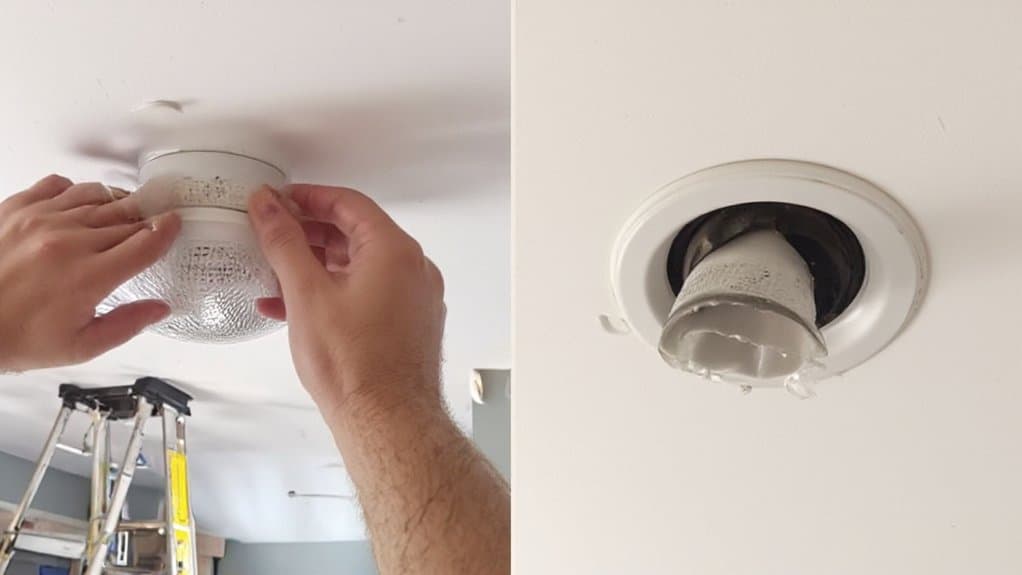Hey there, I know that loud bathroom fan can drive you nuts—I’ve been there with mine rattling like a tin can orchestra! Let’s quiet it down together. Start by grabbing a screwdriver and checking if the fan housing’s screws are loose; a wobbly unit is a noisy one, trust me from my DIY blunders! Want to know the next simple fix? Stick with me for more easy tricks.
Before You Start
Even though bathroom fans are lifesavers for keeping the air fresh, they can sound like a jet engine taking off! Man, I’ve been there, cringing at that racket during a quiet moment. Let’s quiet it down together!
First, pinpoint the noise source. Is it a loose cover or a dusty motor? Grab a flashlight and check.
Next, follow these quick steps:
- Turn off the power—safety first!
- Inspect for loose screws (tighten with a 1/4-inch screwdriver).
- Look for debris in the vent.
I once found a toy car in mine—crazy! Let’s fix this noise now!
What You Will Need
Man, getting that bathroom fan quieter feels like a mission sometimes, doesn’t it? I’ve wrestled with noisy fans, and trust me, you’ll need the right stuff to win this battle!
Here’s what you gotta grab:
- Screwdriver Set – Get a Phillips and flathead combo for those tricky fan screws.
- Cleaning Brush – A small, stiff one (about 2 inches wide) to scrub away dust.
- Lubricating Oil – Pick up a lightweight machine oil (like 3-in-1) for quieting squeaks.
- Replacement Pads – Anti-vibration pads (1-inch thick) to dampen rattles.
Gear up, and let’s tackle this noise nuisance together!
Step-by-Step Guide
Hey there, let’s tackle that noisy bathroom fan together—I’ve had my share of rattling disasters! Start by checking the fan housing tightness, cleaning those dusty blades, lubricating the motor, tightening mounting screws, and insulating the ductwork to hush that racket. Trust me, with a bit of elbow grease, you’ll quiet it down in no time—let’s get started!
1. Inspect Fan Housing Tightness
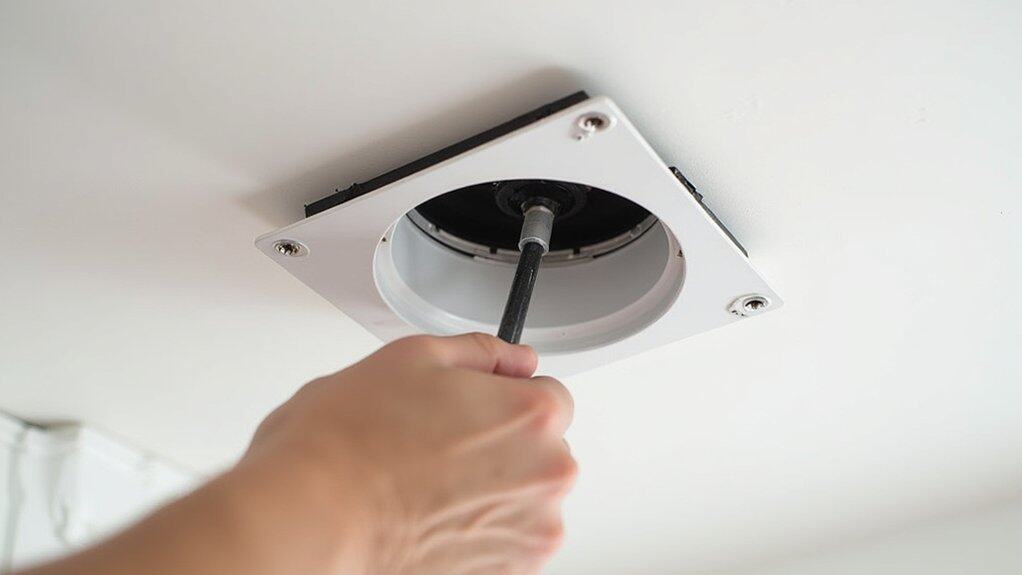
Although it might seem like a small detail, checking the tightness of your bathroom fan housing can make a huge difference in cutting down that annoying noise! Man, I’ve rattled my brain over fan racket before. Let’s fix it together!
First, grab a screwdriver—Phillips head, usually. Turn off the power (safety first!). Check the housing screws; they’re often 1/4-inch.
Tighten each one, but don’t overdo it. I’ve stripped a screw before—oops!
Look for loose panels too. If it’s wobbly, secure it. A tight housing stops vibrations, and voilà, less noise! You’ve got this, trust me!
2. Clean Fan Blades
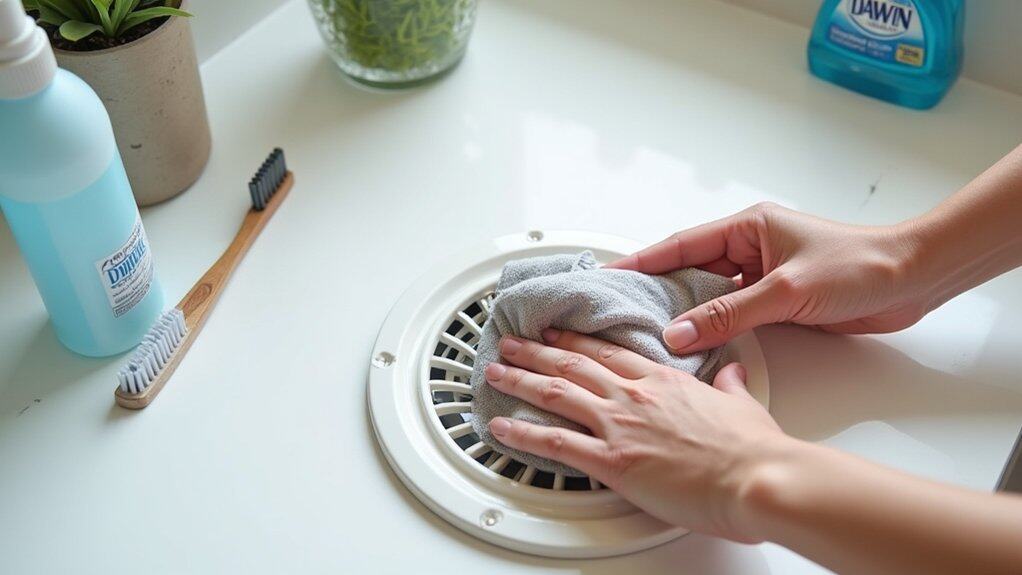
Dive right into tackling that noisy bathroom fan by cleaning those dusty blades! Man, I’ve been there with a fan sounding like a jet engine—ugh! Let’s quiet it down together.
First, safety’s key! Turn off the power at the breaker—don’t skip this, trust me, I’ve had a close call. Grab these:
- A microfiber cloth
- Mild detergent (like Dawn, 1 tsp in 2 cups water)
- Small brush (old toothbrush works!)
Remove the fan cover, usually just snaps off. Gently wipe blades with the damp cloth, scrub stubborn dust with the brush. Dry ‘em well—done! Wow, hear that peace?
3. Lubricate Fan Motor
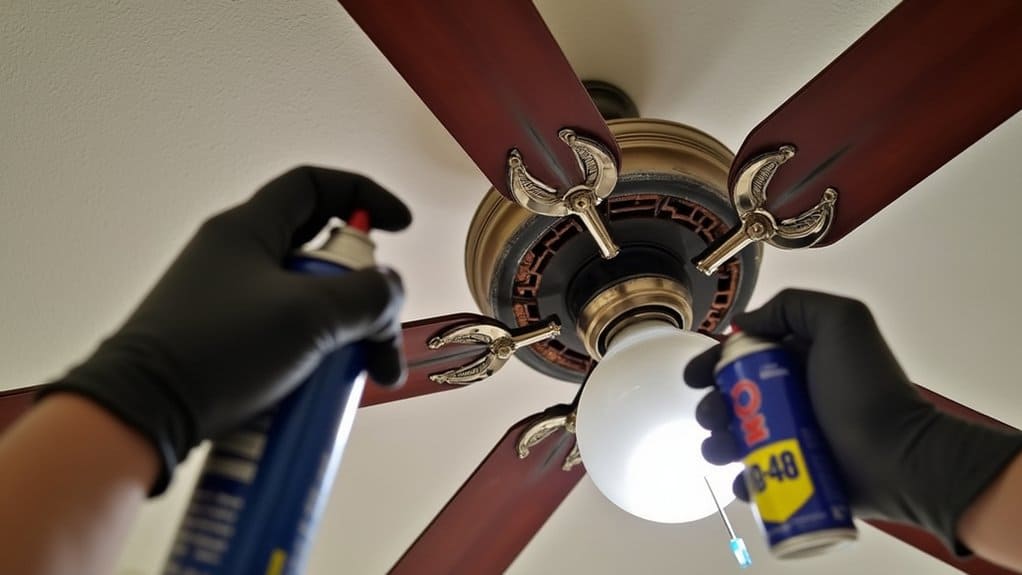
Let’s tackle that pesky bathroom fan noise by lubricating the motor—trust me, it’s a game-changer! I’ve been there with a fan screaming louder than my old blender. It’s fixable, though!
First, turn off the power—safety first! Grab a can of electrical contact cleaner and silicone lubricant spray (like WD-40 Specialist Silicone, about $6 at hardware stores). Locate the motor’s access panel, usually near the fan housing.
Now, spray a tiny bit—1-2 seconds—onto the motor shaft where it spins. Wipe off excess with a cloth. Done! That noise should quiet down, or I’m not a DIYer!
4. Tighten Mounting Screws
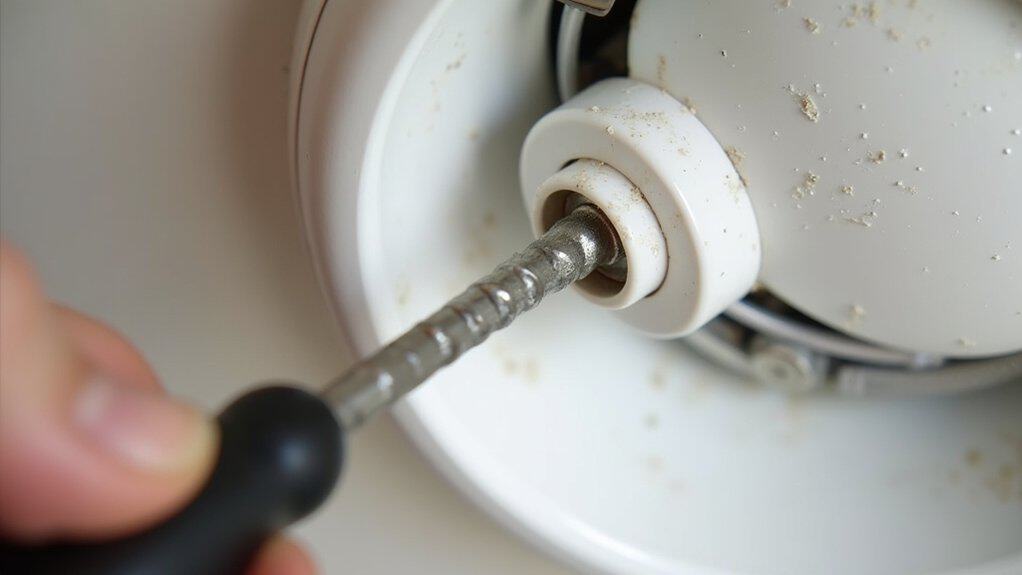
Get ready to silence that bathroom fan by tightening those sneaky mounting screws—I’m telling you, it’s often the simplest fix! Man, I’ve had fans rattle like a tin can in a storm until I figured this out!
First, grab a screwdriver—Phillips head, size #2 works best. Turn off the power at the breaker (safety first!).
Now, check the fan housing. See those screws? Tighten each one, but don’t overdo it—quarter turn past snug is perfect! I once overtightened and cracked a mount. Ugh!
Test it after. Still noisy? Don’t worry, we’ve got more tricks coming!
5. Insulate Ductwork Noise
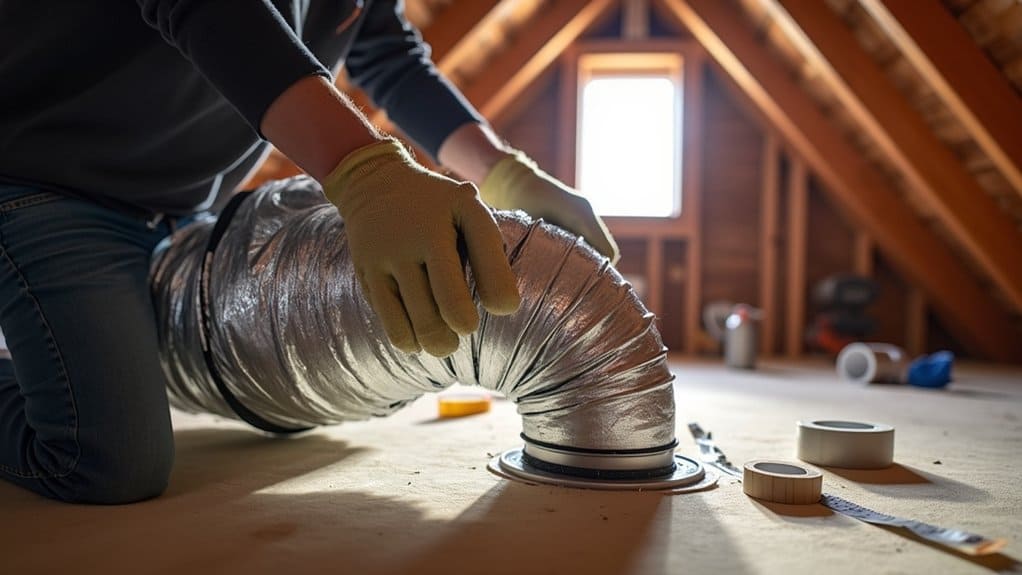
Hey, if tightening those mounting screws didn’t hush your bathroom fan, I’ve got another trick up my sleeve—let’s tackle the ductwork noise! Man, that racket can drive you nuts! I’ve been there, trust me.
Grab some duct insulation—it’s like a cozy blanket for your noisy pipes. Buy a roll of fiberglass duct wrap (about 2 inches thick) at any hardware store. Here’s how:
- Measure your duct length (mine was 6 feet).
- Cut the wrap to fit snuggly.
- Secure it with duct tape.
Wow, what a difference! No more annoying buzz echoing through the house!
6. Replace Worn Fan Belt

Tackle that noisy bathroom fan by checking out the fan belt—it might just be the sneaky culprit behind all that racket! Man, I’ve been there, cursing at a whiny fan until I figured this out! Let’s fix it together.
Step 1: Safety First****
Turn off power at the breaker—don’t zap yourself like I almost did! Grab a ladder and screwdriver (Phillips #2 works best).
Step 2: Swap the Belt****
Remove the fan cover, spot the worn belt (a rubber loop, maybe 10 inches long), and replace it with a matching one. Tighten it snug—no wobbles!
There, peace at last!
7. Upgrade Fan Model
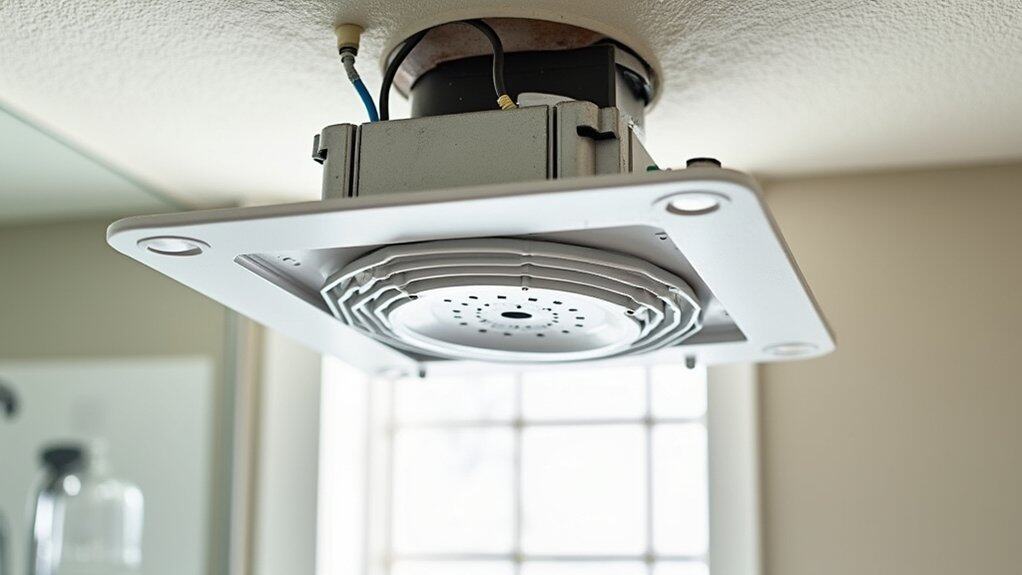
Although a quick belt fix can hush some racket, sometimes your bathroom fan’s just too old to save, and I’ve been there with a clunker that wouldn’t hush up no matter what! Man, that thing screamed like a banshee! Let’s upgrade it together.
Picking the Right Fan
Look for a quiet model with a low sone rating—aim for 1.0 or less. I nabbed a Panasonic WhisperCeiling (80 CFM) for $120. Worth it!
Installation Steps
- Turn off power—safety first!
- Remove the old fan.
- Install the new one per instructions.
Voila, silence at last!
8. Adjust Fan Speed Settings
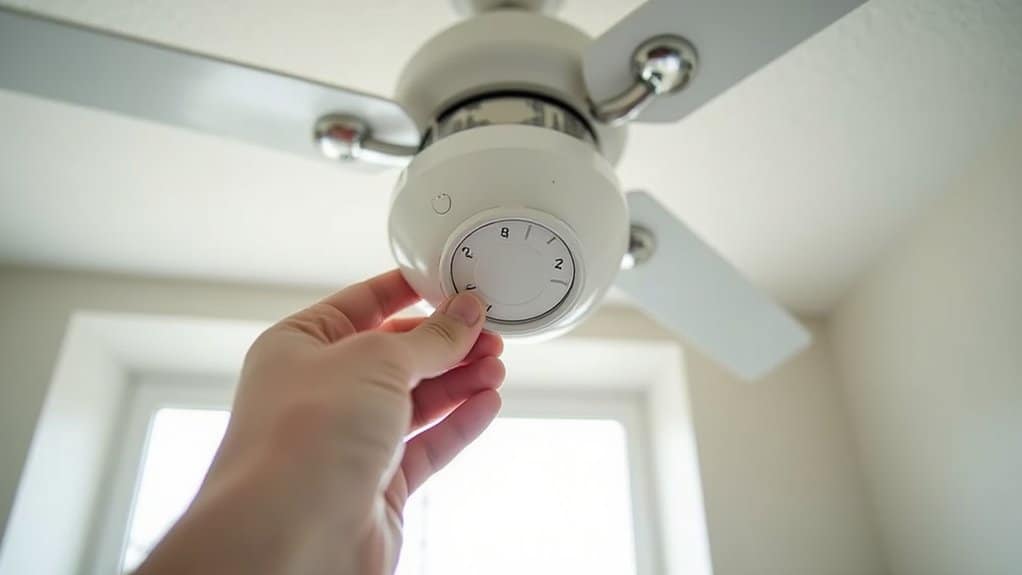
Wow, let’s plunge into tweaking those fan speed settings to hush that noisy bathroom fan! I’ve been there, cringing at the racket my fan makes. It’s like a jet engine!
First, locate the speed control switch—often near the fan or on a wall panel. Check your fan’s manual (mine’s a Broan 688, sneaky little dial inside!). Turn it down from high to medium or low.
Next, test it. Does it sound better? Awesome! If it’s still loud, tweak it lower. Careful, don’t burn out the motor—I did that once, oops! Adjust until it’s just right!
9. Check Ventilation Duct Alignment
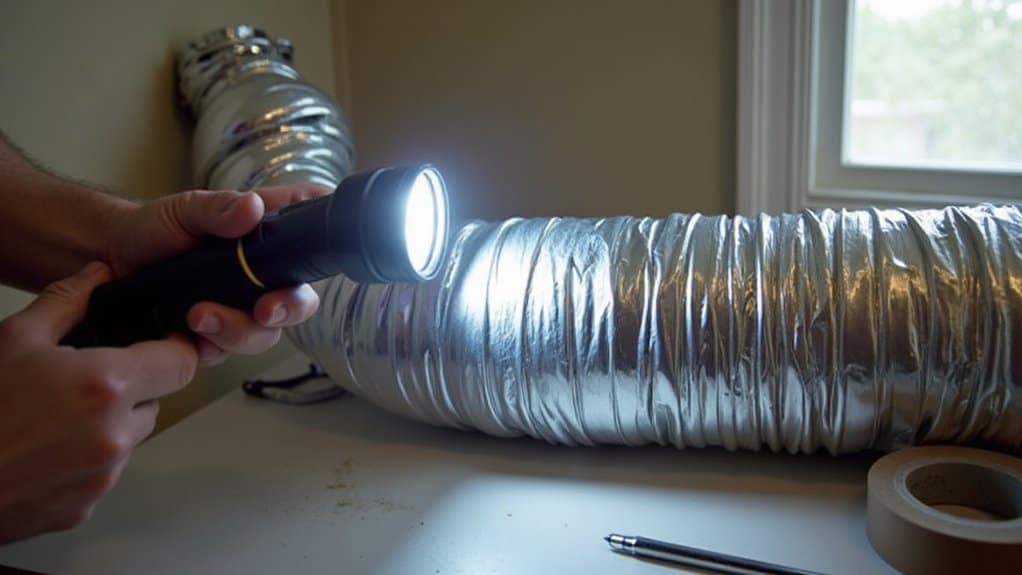
Before we plunge into the nitty-gritty, let’s check if your bathroom fan’s ventilation duct is lined up right—it could be the sneaky culprit behind all that noise! Man, I’ve wrestled with ducts before, and a tiny kink can turn your fan into a roaring beast!
First, grab a flashlight and peek into the duct opening. Is it straight or twisted like my last DIY disaster? Look for bends or blockages within the first 3-5 feet.
Next, verify connections are tight—loose ducts rattle! Use a screwdriver to secure clamps. Geez, a quiet fan feels like a victory!
10. Install Soundproofing Materials
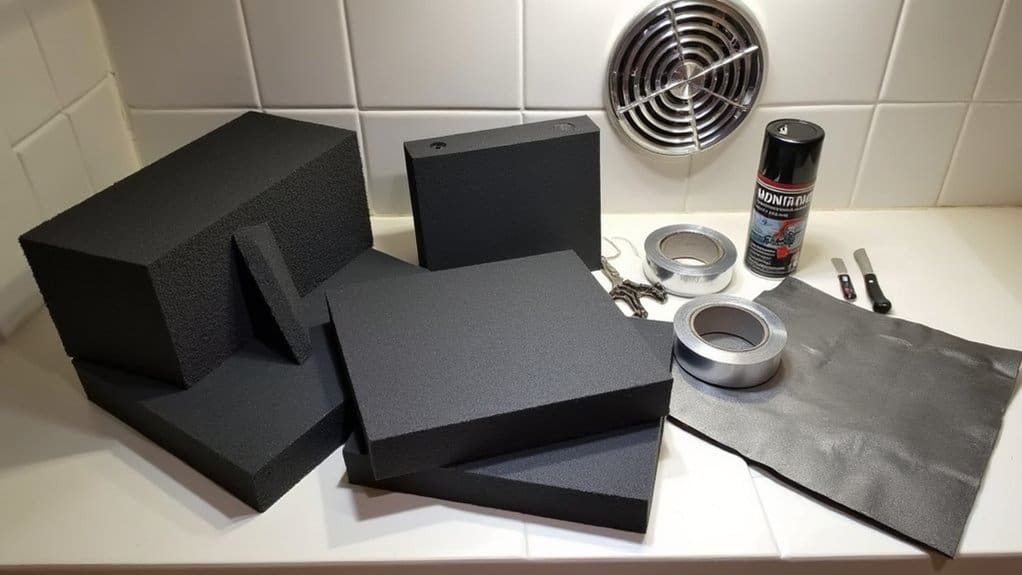
Picture a fortress of silence around your bathroom fan—that’s what we’re building today with soundproofing materials! Man, I’ve struggled with noisy fans, and trust me, this works.
First, grab some acoustic foam or mass-loaded vinyl—about 2 square feet should do for a standard fan. Cut it to fit around the fan housing. Use adhesive spray to stick it on tight!
Next, check the duct. Wrap it with soundproofing tape, like Noico 80 mil, for 3-4 feet. Wow, the difference is huge! I once skipped this, and my fan sounded like a jet—don’t repeat my mistake!

